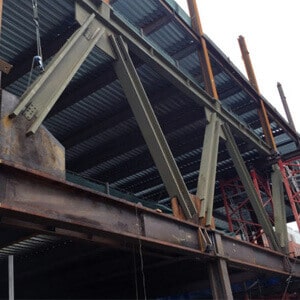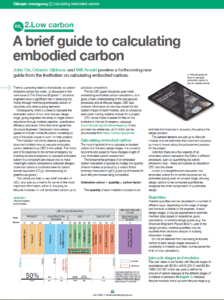There are different ways to measure the embodied carbon of structural systems and all offer varying degrees of information on the overall impact of the system. In general the most common are to either consider the entire life cycle of the building from initial raw material extraction to the end of life and final recycling of building components or to consider only the product impacts of stages A1-A3 which start at raw material extraction but are bound by just before the product, or structural component, leaves the fabrication facility. To consider the full life cycle impacts a life cycle assessment is performed and in today’s design phases these are usually performed using commercially available software that requires the user to input structural material quantities (SMQ) and assign material types to those quantities with full life cycle impacts embedded within the softwares program. In the product impact only case, the product impacts are typically calculated by multiplying the structural material quantities by embodied carbon factors included in available environmental product declarations (EPDs) for each material. Both methods are summarized in the diagram below and are actively being employed on today’s projects having both pros and cons associated with each.
Considerations for Measurement
Website Links
Books
- Whole Building Life Cycle Assessment: Reference Building Structure and Strategies, ASCE (Structural Engineering Institute Sustainability Committee), 2018
- Life Cycle Assessment, by Kathina Simonen, 2014
Articles and Guides
- IStructE: “How to calculate embodied carbon,” 2nd edition, Mar 2022
- IStructE: “A Brief Guide to Calculating Embodied Carbon,” Jul 2020
- Carbon Leadership Forum “LCA Practice Guide,” Jun 2019
- American Institute of Architects, “Building Life Cycle Assessment in Practice,” 2010
- World Business Council for Sustainable Development and World Resources Institute, “The Greenhouse Gas Protocol for Project Accounting,”
- Athena Sustainable Materials Institute, “Athena Guide to Whole-Building LCA in Green Building Programs,” Mar 2014
- Royal Institution of Chartered Surveyors (RICS), “Whole Life Carbon Assessment for the Built Environment,” Nov 2017
For more tool-based resources, see also: Tools for Estimating Embodied Carbon




